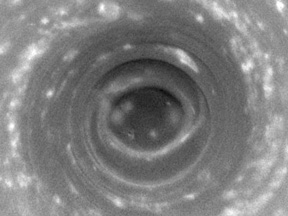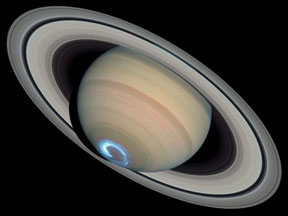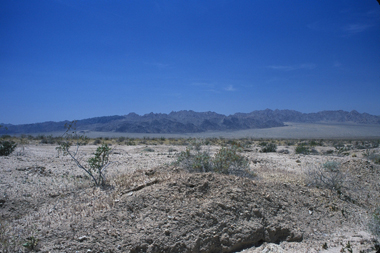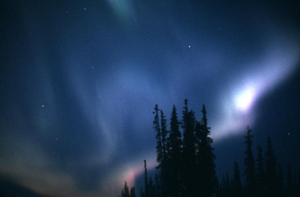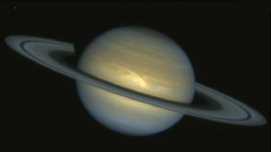Click on image for full size
Image courtesy of NASA/JPL/Space Science Institute.
Saturn's Southern Polar Vortex
Saturn's South Pole is very stormy. It is also surprisingly warm. A huge, hurricane-like storm is centered on the South Pole. Astronomers recently discovered that the pole is also warmer than any other place on the ringed planet.
Scientists have created a "heat map" of Saturn using infrared "light". It shows which parts of Saturn are warmer and which places are cooler. They were surprised when they saw that Saturn's South Pole is the hottest part of the ringed planet. A bright dot at the pole in the infrared picture shows that the temperature at the pole is about 60° C (108° F) higher than at the equator! One scientist said that if we found this temperature pattern on Earth it would be "like discovering that Antarctica is hotter than the Sahara Desert".
On Earth, cold air often gets trapped near the poles during winter. Scientists call this mass of cold air a "polar vortex". The swirling air near Saturn's South Pole looks a lot like a polar vortex. However, on Saturn the vortex traps warm air near the pole. Scientists are still trying to figure out how the vortex on Saturn works.
The warm air at the South Pole probably provides the energy that keeps the hurricane-like storm going. Like hurricanes on Earth, the storm at Saturn's pole has spiral bands of clouds, high wind speeds, and a gigantic eyewall. The "hurricane" on Saturn seems to be "locked" in place over the pole. That is different from Earthly hurricanes, which move around.
Saturn's "polar hurricane" is much larger than hurricanes on Earth. The storm on Saturn is thousands of kilometers (miles) across. The eye at the storm's center is about 1,500 kilometers (930 miles) in diameter. Clouds in the eyewall tower 30 to 75 kilometers (19 to 47 miles) above their surroundings. That is 2 to 5 times higher than in hurricanes on Earth. Winds around the polar vortex can reach speeds of 550 km/hour (342 miles per hour).
The "polar hurricane" on Saturn is the first storm with an eyewall discovered beyond Earth. Even Jupiter's Great Red Spot, which is much larger than Saturn's storm, does not have an eye or an eyewall.


